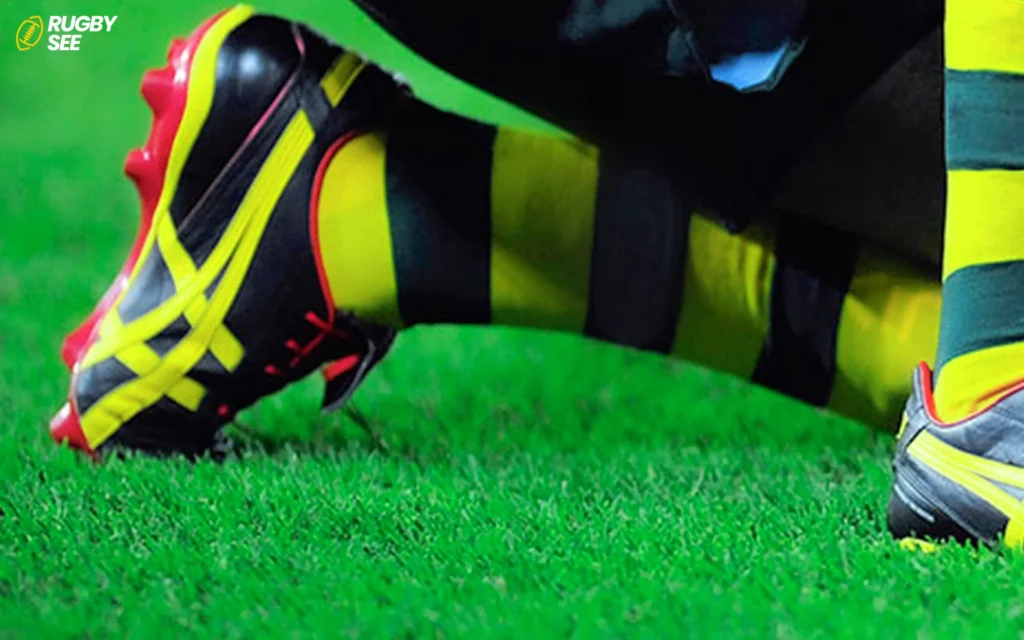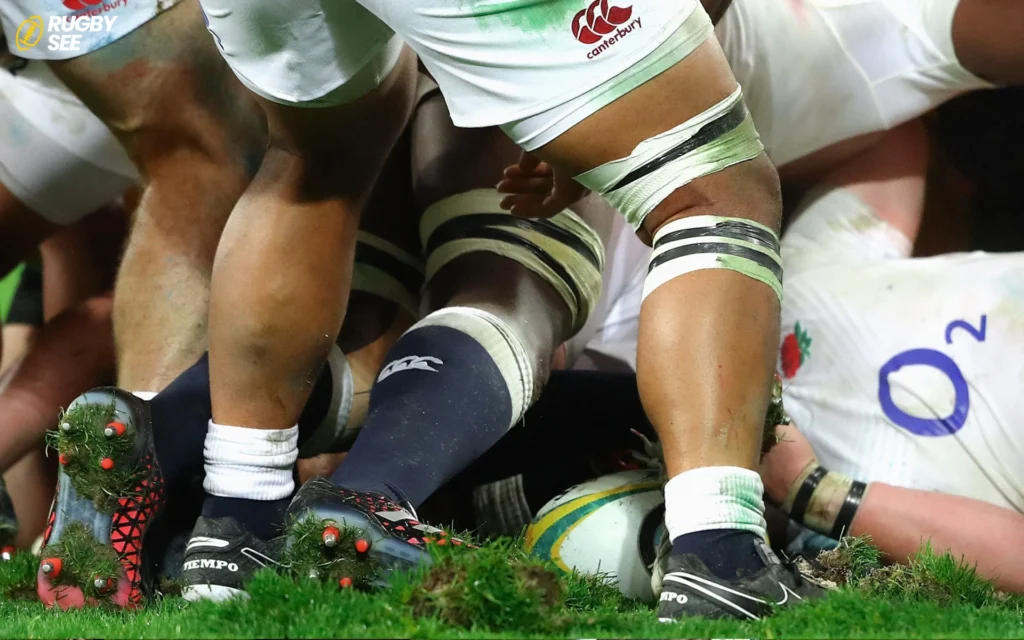The world of sports is full of specialized equipment designed to enhance performance, safety and comfort. Meanwhile, choosing shoes is very important for athletes. This brings us to a common question: Are rugby and football boots the same? At first glance, rugby and football boots may seem similar, but dig deeper and you’ll discover significant differences tailored to the unique needs of each sport. This article from Rugbysee explores these differences and helps players make informed decisions about their boots.
Understanding the Basics: Cleats in Sports
Cleats, also known as studs or boots, are designed to provide athletes with additional grip and stability on the playing surface. While the primary function remains consistent across sports, variations in design address specific needs and regulations of each sport. Thus, understanding the nuances between rugby and soccer cleats is essential for both safety and performance.
The Main Differences Between Rugby and Soccer Cleats
1. Cleat Material and Configuration
Rugby cleats typically feature a mixture of blade and conical studs. The studs can be longer to accommodate playing on softer, muddier grounds, common in rugby. Soccer cleats, on the other hand, often utilize shorter studs and prioritize configurations that offer agility and quick changes in direction on firmer surfaces.
2. Soleplate Flexibility
Soccer cleats are designed with a more flexible soleplate to facilitate intricate footwork and ball control. Rugby cleats tend to have a sturdier build to withstand the physical demands of the game, including scrums and tackles.

3. Toe Studs
A distinctive feature of rugby cleats is the presence of a toe stud, also known as a “toe spike.” This addition provides extra traction during scrums. Soccer cleats do not have toe studs due to the sport’s rules and the increased risk of injury during slide tackles.
4. Durability and Protection
Given the physical nature of rugby, its cleats are constructed for higher durability and offer more foot protection. This means heavier materials and a more robust design. Soccer cleats lean towards lighter materials to enhance speed and agility, often at the expense of durability.
5. Ankle Support
Rugby cleats sometimes offer additional ankle support to protect against the sport’s common rolling and twisting injuries. Soccer cleats typically feature a low-cut design to allow maximum ankle flexibility.
Choosing the Right Cleats for Your Sport
Selecting the appropriate cleats is more than just a matter of comfort; it’s a safety issue. Using soccer cleats in rugby might not provide enough protection or traction, especially in wet conditions. Conversely, using rugby cleats in soccer could hinder agility and speed, potentially leading to unnecessary fouls or injuries and if you want to know about that Rugby is harder or Rugby read Is Rugby Older Than Football? An In-depth Analysis.
FAQs: Common Questions About Cleats
- Can I use soccer cleats for rugby (and vice versa)? While you might manage in casual play, for competitive games, it’s best to use the correct cleats designed for each sport to ensure safety and performance.
- How do I care for my cleats? Regularly clean your cleats with a soft brush and mild soap. Allow them to dry naturally away from direct heat sources. Check and replace worn-out studs as needed.
- When should I replace my cleats? Look for signs of wear in the studs, soleplate, and upper material. Consistent discomfort or a visible wear pattern are indicators that it’s time for a new pair.
The Impact of Wearing the Wrong Cleats
Wearing the incorrect type of cleats can have more than just a minimal impact on performance; it can significantly increase the risk of injury. For instance, soccer players wearing rugby cleats might find the extra weight and rigid structure limit their speed and agility, leading to late challenges or being outpaced by opponents. Conversely, rugby players in soccer cleats may find they lack the necessary traction and support during scrums, rucks, and mauls, leading to slipped footing or even ankle and knee injuries.

Innovations and Technology in Cleat Design
As sports science advances, so does the technology behind cleat design. Manufacturers are continually exploring new materials and configurations to enhance performance and safety. Innovations such as adjustable stud length, materials that offer better grip, and designs that reduce pressure on the foot are becoming more common. These advancements mean that the gap between rugby and soccer cleats in terms of technology and materials is narrowing, although the fundamental design principles and safety features remain distinct.
The Role of Regulations
Sporting bodies for both rugby and soccer set regulations regarding the equipment that can be used, including cleats. These rules are in place to ensure fair play and reduce the risk of injury. For example, World Rugby’s Regulation 12 outlines specific requirements for players’ boots, including the number and length of studs. Similar regulations exist in soccer, governed by bodies such as FIFA. Players and coaches must stay informed about these regulations to avoid penalties or disqualification.
Personal Preference and Comfort
While the technical specifications and regulations are crucial, personal comfort and preference also play a significant role in choosing cleats. Some players may prefer the snug fit and lightweight feel of soccer cleats, while others prioritize the stability and protection offered by rugby cleats. Trying on different styles and brands is essential to find the perfect pair that meets both the player’s needs and the sport’s demands.
Expert Advice and Fitting
For those unsure about the best type of cleats for their needs, seeking advice from a professional can be invaluable. Sports equipment stores often have knowledgeable staff who can provide recommendations based on playing style, position, and personal preferences. Additionally, many stores offer fitting services to ensure the cleats provide the right balance of comfort, support, and performance.

Sustainability in Cleat Production
An emerging consideration for many athletes is the environmental impact of their sports equipment. The production of cleats, like many sports shoes, can have a significant environmental footprint. In response, some manufacturers are now focusing on sustainable practices, such as using recycled materials and reducing waste in production. Choosing cleats from brands committed to sustainability can be another factor for players to consider.
While rugby and soccer cleats may share a foundational purpose, the differences in their design are significant and tailored to each sport’s specific needs. Understanding these distinctions can help players choose the right equipment, ensuring both optimal performance and safety on the field. As we’ve explored, the choice between rugby and soccer cleats is not just about preference but about respecting the unique demands and safety considerations of each sport.










